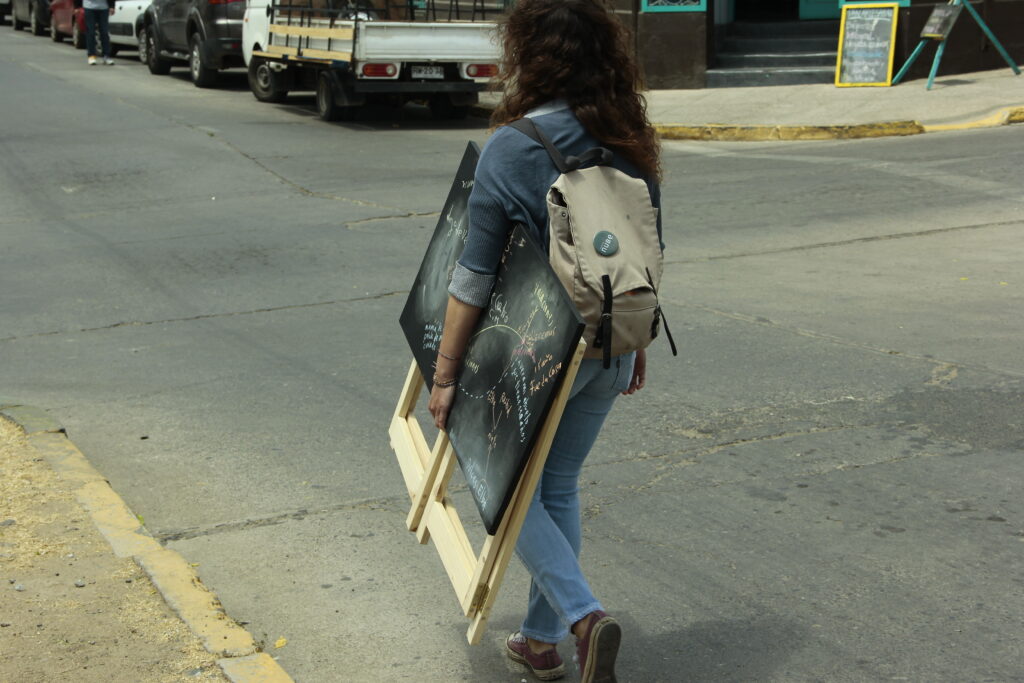¿Qué es para ti una decisión? (2020)
What Is a Decision for You? was an artistic residency I carried out in La Ligua between 2020 and 2021, as part of a partnership between UC, CIIR, and Cecrea. It stemmed from a deep question: how do we think about our decisions, how do we experience them, and what shape might they take if we tried to draw them? At the time, Chile was drafting a new Constitution, and I felt that reflecting on how we decide could be a modest yet meaningful way of engaging with that moment.
Leer más...
What we proposed was simple: to walk through La Ligua, speak with its inhabitants—elders, children, youth, workers, neighborhood leaders—and invite them to draw their decisions. To do so, we created two tools: a portable chalkboard table and a set of Y-shaped ceramic pieces, inspired by the bifurcations in tree roots and branches. The idea was to let drawing, play, and conversation become valid forms of thought—beyond rational or argumentative logic.
These drawings revealed personal stories, everyday dilemmas, intuitions, and regrets. Some people said they had never made an important decision in their lives; others believed all decisions were meaningful. One girl drew her decision to take up karate, and how that influenced her friend. A street vendor told how he left Morocco for love. A mother drew her decision to break from an authoritarian family pattern by choosing to make decisions collectively with her children.
After each encounter, we scanned the drawings and printed them on cotton paper to return them to their authors. For many, receiving that object was moving: what began as a casual conversation became a tangible record of their choices. Several people chose to frame their drawings or share them with family. In parallel, we organized virtual meetings and in-person workshops at Cecrea and the Museo de La Ligua, where both devices were activated in intergenerational group sessions.
This project did not follow a traditional exhibition format. It was more a way of dwelling: of being in a place, listening, tracing, giving something back. For me, it was also a way of expanding the tools of art to create spaces for dialogue—validating ways of thinking that are not measured by metrics, but by memory, emotion, and care.
Today, when decisions are often outsourced—to algorithms, surveys, or indicators—I still believe in the poetic and political force of asking someone: What is a decision to you? And especially in doing so through drawing, play, and the willingness to be affected by each answer and its shape.
